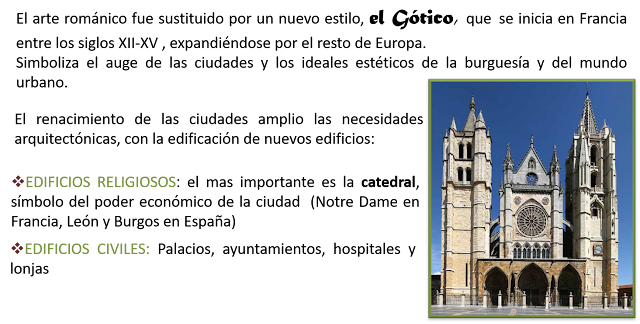A. Lee de manera comprensiva el punto 1
B. Responde a las siguientes actividades en español. y escribe el enunciado:
1.¿Qué cambio económico importante se desarrollo en el siglo XI?
2.¿Qué es un burgo?
3¿Quienes eran los burgueses? ¿ cual era su oficio?
4.¿Qué es un gremio?
5.Escribe las categorías de un gremio y sus características
6. ¿Dónde se desarrolla el comercio?
7. ¿Qué podían adquirir los nobles en los mercados?
8.¿Quienes eran los cambistas?
9.¿En qué siglo se vuelve a utilizar la moneda como método de cambio?
10.¿Qué categoría del gremio no recibe un sueldo?
C. Read Agriculture in 9th Century Europe
D. Underline the words that you don´t understand.
E. Write those words with their meaning in Spanish in your notebook.
F. Answer the following questions. Find each answer in the point 1:
F. Answer the following questions. Find each answer in the point 1:
- When did the bourgeoisie
begin to take shape in Europe?
- How did many people in the 12th century make money?
- What types of people were part of the bourgeoisie?
- How did the bourgeoisie differ from the nobility?
- What impact did the growth of
the bourgeoisie have on society?
A. Lee de manera comprensiva el punto 2
B. Responde a las siguientes actividades en español. y escribe el enunciado:
1.¿Cómo consiguieron los reyes aumentar su poder?
2.¿Qué son las asambleas consultivas?
3.¿Cuáles fueron las funciones de la asamblea consultivas?
4.¿Eu¿Qué dos papas se enfrentaron en el Cisma de Occidente?
5.¿Qué es el Concordato de Worms?
6.¿Qué dos países se enfrentaron en la Guerra de los Cien Años?
7.¿Por que se produjo la Guerra de los Cien Años?
8. Cronología de la Guerra de los Cien Años.
9. ¿Qué es el Concilio de Constanza?
10. ¿Qué supuso el aumento de impuestos para los reyes?
C. Read Agriculture in 9th Century Europe
D. Underline the words that you don´t understand.
E. Write those words with their meaning in Spanish in your notebook.
F. Answer the following questions. Find each answer in the point 2:
F. Answer the following questions. Find each answer in the point 2:
- When did the Western Schism begin?
- Question: How many popes claimed the position during the Schism?
- Question: Where was Pope Clement VII elected?
- Question: How long did the Western Schism last?
- Question: How was the Western Schism resolved?
A. Lee de manera comprensiva el punto 3
B. Responde a las siguientes actividades en español. y escribe el enunciado:
1.Nombra las causas de la crisis económica y social de la Baja Edad Media.
2. ¿Qué enfermedad surgen durante este periodo causando la muerte de la tercera parte de la población en Europa?
3. Causas del descenso demográfico en el siglo XIV
4.¿Cuál era la situación en el campo durante este periodo?
5.¿Cuál era la situación en las ciudades durante este periodo?
6. ¿Por qué se enfrentaron los grupos humildes a los ricos?
7. ¿Dónde se producen las tensiones sociales en el siglo XIV?
8. ¿Qué consecuencia tuvo en el campo las frecuentes guerras?
9. ¿Por qué se produjo la desnutrición de la población
10.¿Qué minorías fueron atacadas durante este periodo?
C. Read Agriculture in 9th Century Europe
D. Underline the words that you don´t understand.
E. Write those words with their meaning in Spanish in your notebook.
F. Answer the following questions. Find each answer in the point 3:
F. Answer the following questions. Find each answer in the point 3:
- Where did the Black Death start
- How was the Black Death spread?
- What were some symptoms of the Black Death?
- How much of Europe's population was killed by the Black Death?
- What happened to many cities during the Black Death?
A. Lee de manera comprensiva el punto 4
B. Responde a las siguientes actividades en español. y escribe el enunciado:
1.¿Cuándo y donde se inicia el Gótico?
2. ¿Qué simboliza el Gótico?
3. ¿Qué tipos de edificios góticos se construían?
4. ¿Cuál es el edificio religioso mas importante?
5. ¿Cuáles eran los edificios civiles góticos?
6. Nombra dos catedrales góticas importantes y su localización geográfica.
7. ¿Cuáles fueron las características de la arquitectura gótica?
8. ¿Cuál era la función de un vidriera?
9. Nombra los cuatro elementos arquitectónicos utilizados en los edificios góticos.
10. ¿Qué simboliza la catedral en una ciudad durante este periodo?
C. Read Agriculture in 9th Century Europe
D. Underline the words that you don´t understand.
E. Write those words with their meaning in Spanish in your notebook.
F. Answer the following questions. Find each answer in the point 4:
F. Answer the following questions. Find each answer in the point 4:
A. Lee de manera comprensiva el punto 5
B. Responde a las siguientes actividades en español. y escribe el enunciado:
1.Nombra las características de la escultura gótica
2. ¿Cuál era la finalidad de las esculturas góticas?
3. Escribe los soportes góticos utilizados en la escultura.
4. ¿Qué es una gárgola?
5. ¿Qué es un retablo?
6. ¿Qué es una sillería de coro?
7. ¿Qué temática destaca en el retrato?
8. Escribe las características de la pintura gótica
9. ¿Qué pintor gótico destaca en Italia?
10. ¿Qué dos zonas importantes destacan en la pintura gótica del siglo XV?
C. Read Agriculture in 9th Century Europe
D. Underline the words that you don´t understand.
E. Write those words with their meaning in Spanish in your notebook.
F. Answer the following questions. Find each answer in the point 5:
F. Answer the following questions. Find each answer in the point 5:
1. What are gargoyles?
2. What was the main purpose of gargoyles?
3. Where were gargoyles placed on cathedrals?
4. What did people believe gargoyles could do?
5. Besides their practical purpose, why were gargoyles important?
2. What was the main purpose of gargoyles?
3. Where were gargoyles placed on cathedrals?
4. What did people believe gargoyles could do?
5. Besides their practical purpose, why were gargoyles important?




































